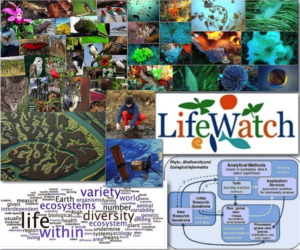LifeWatch, http://www.lifewatch.eu, the e-Science European Research Infrastructure for Biodiversity and Ecosystem Research, is a distributed Research e-Infrastructure to advance biodiversity research and to address the big environmental challenges and support knowledge-based strategic solutions to environmental preservation. This mission is achieved by providing access to a multitude of data sets, services and tools enabling the construction and operation of Virtual Research Environments.
As an e-Infrastructure of distributed nature, LifeWatch is composed by Common Facilities, located in Spain (Statutory Seat and the ICT e-Infrastructure Technical Offices), Italy (Service Centre) and The Netherlands (Virtual Laboratories and Innovations Centre).
The ICT Technical office will coordinate and manage the ICT e-Infrastructure construction, maintenance and deployment operations, including coordination of the design and implementation of e-Services demanded by the Service Centres in other countries. In the Iberian area the activity of Lifewatch is articulated via IberLife, which in turn relies on the support of Ibergrid for the deployment and operation of core services.
 Distributed Facilities – Member countries of the LifeWatch ERIC and scientific networks are encouraged to establish LifeWatch Centres to serve specialized facilities in the framework of the LifeWatch services, in accordance with it overall architectural scheme. They are located in another four member countries (Belgium, Greece, Portugal, Romania and Slovenia); the list of participant countries extends to 14, including France, Finland, Hungary, Norway, Slovakia and Sweden.
Distributed Facilities – Member countries of the LifeWatch ERIC and scientific networks are encouraged to establish LifeWatch Centres to serve specialized facilities in the framework of the LifeWatch services, in accordance with it overall architectural scheme. They are located in another four member countries (Belgium, Greece, Portugal, Romania and Slovenia); the list of participant countries extends to 14, including France, Finland, Hungary, Norway, Slovakia and Sweden.
The services currently available for the biodiversity community are also available for wider re-use by other scientific communities. Among them some very extended ones in the biodiversity community, like those provided by GBIF-Spain and GBIF-Portugal, or by the advanced LifeWatch Virtual Research Environments, launched on top of FedCloud resources since 2015, and exploited by first line research groups and centres. These services will provide a clear added value to the current e-infrastructure resources that will be available in the framework of the European Open Science Cloud.
The current number of users of the services presented are o(1.000) for basic researchers (notice that for example GBIF.ES and GBIF.PT provide data service to their national communities, or that one of the popular services, TRUFA, has more than 200 active users submitting pipelines in the last year), o(200) for researchers involved in management (this number includes those participating in different official monitoring activities and also specific projects, in particular LIFE+ projects), and o(2.000) for citizen scientists (notice that >1000 were already active in the last year in the Natusfera project focused mainly in Spain).
|
Service Name |
Main area |
Main teams involved |
|
Modelling Water Reservoirs |
Observatories Modelling |
LW.ES, NGI-ES, [IFCA, Ecohydros, CITIC] NGI-IT [INFN] |
|
GBIF data access under biogeographic context |
Observatories Data Collections |
LW.ES, LW.PT, NGI-ES, NGI-PT [GBIF Spain and GBIF Portugal, LIP, IFCA] |
|
Citizen Science Services |
Citizen Science Data Processing |
LW.ES, NGI-ES BIFI, CREAF, GBIF node, IFCA , U. Granada, U.Cordoba]. |
|
Image Classification Deep Learning Tools |
Citizen Science Data Analysis |
LW.ES, NGI-ES [BIFI, IFCA] |
|
Digital Knowledge Preservation Framework |
Virtual Lab Data Management Analysis Preservation |
LW.ES [IFCA, U.Sevilla, CITIC] |
|
Remote Monitoring and Smart Sensing |
Virtual Lab Data Analysis |
LW.ES [IFCA, U. Sevilla, Andalucia SmartCity] |
|
TRUFA |
Workflows |
LW.ES [IFCA] |
|
DECLIC |
Workflows |
NGI-FR, +NGI-ES [PGTB, UPV, France-Grilles] |
